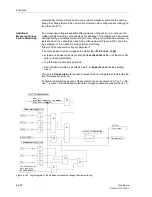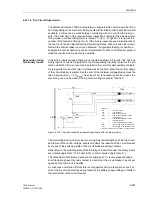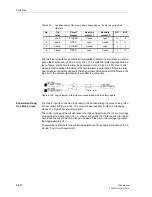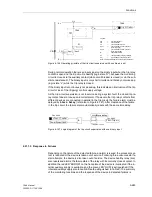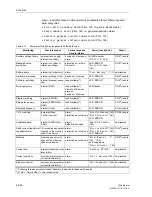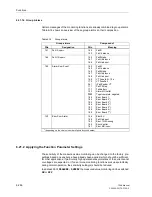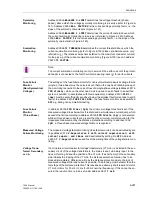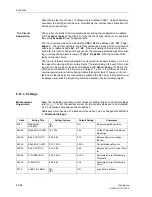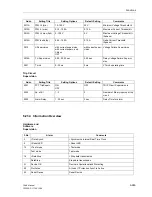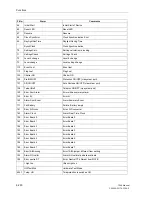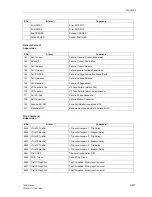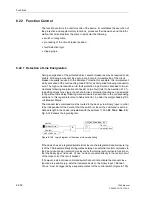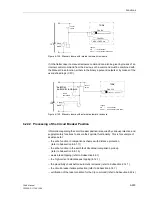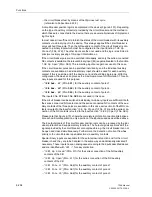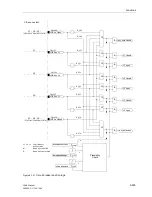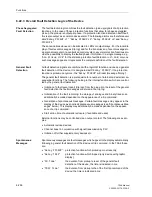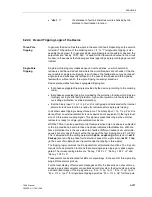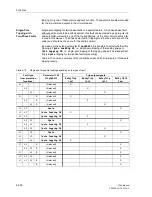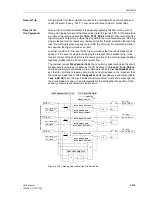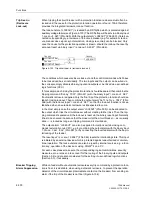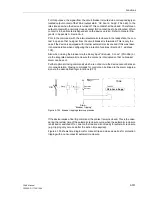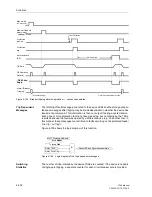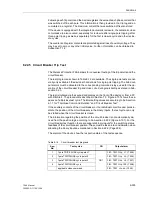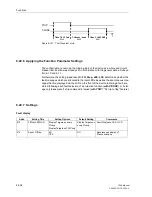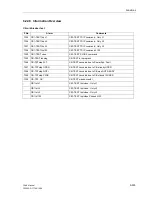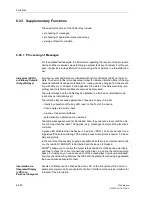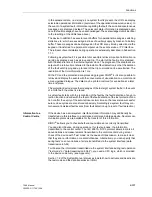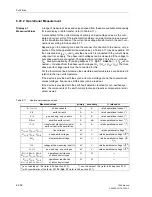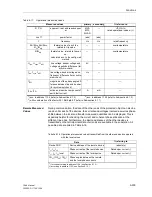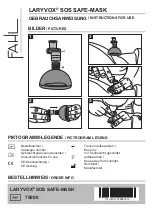
Functions
6-294
7SA6 Manual
C53000-G1176-C156-2
−
the circuit breaker test by means of the trip-close test cycle
(refer also to Subsection 6.22.5)
A circuit breaker position logic is incorporated in the device (Figure 6-151). Depending
on the type of auxiliary contact(s) provided by the circuit breaker and the method in
which these are connected to the device, there are several alternatives of implement-
ing this logic.
In most cases it is sufficient to furnish the status of the circuit breaker with its auxiliary
contacts via a binary input to the device. This always applies if the circuit breaker is
only switched three-pole. Then the NO auxiliary contact of the circuit breaker is con-
nected to a binary input which must be configured to the input function “
>CB 3p
Closed
” (FNo.
379
). The other inputs are then not used and the logic is restricted in
principle to simply passing of this input information on.
If the circuit breaker poles can be switched individually, and only the series-connected
NC contacts is available, the relevant binary input (BI) is again allocated to the function
“
>CB 3p Open
” (FNo.
380
). The remaining inputs are again not used in this case.
If the circuit breaker poles can be switched individually, and the individual auxiliary
contacts are available, an individual binary input should be used for each auxiliary
contact if this is possible and if the device can and should trip single-pole. With this
configuration, the device can process the maximum amount of information. Three bi-
nary inputs are used for this purpose:
−
“
>CB Aux. L1
” (FNo.
351
), for the auxiliary contact of pole L1,
−
“
>CB Aux. L2
” (FNo.
352
), for the auxiliary contact of pole L2,
−
“
>CB Aux. L3
” (FNo.
353
), for the auxiliary contact of pole L3,
The inputs FNo.
379
and FNo.
380
are not used in this case.
If the circuit breaker can be switched individually, two binary inputs are sufficient if both
the series-connected NO contacts and the series-connected NC contacts of the aux-
iliary contacts of the three poles are available. In this case, series circuit of the NO con-
tacts is routed to the input function “
>CB 3p Closed
” (FNo.
379
) and the series con-
nection of the NC contacts is routed to the input function “
>CB 3p Open
” (FNo.
380
).
Please note that Figure 6-151 shows the complete logic for all connection alternatives.
For each particular application, only a portion of the inputs is used as described above.
The 8 output signals of the circuit breaker position logic can be processed by the indi-
vidual protection and supplementary functions. The output signals are blocked if the
signals provided by the circuit breaker are not plausible e.g. the circuit breaker can not
be open and closed simultaneously. Furthermore, the detection of current flow has
priority to the circuit breaker open detection via auxiliary contacts.
Special binary inputs are available for the auto-reclosure function and for the circuit
breaker check; they are to be handled in the same way and additionally allocated if
necessary. These inputs have an analogueous meaning to the inputs described above
and are identified with “
LS1
...” for easy distinction:
−
“
>CB1 3p Closed
” (FNo.
410
) for the series connection of the NO auxiliary
contacts of the CB
−
“
>CB1 3p Open
” (FNo.
411
) for the series connection of the NC auxiliary
contacts of the CB
−
“
>CB1 Pole L1
” (FNo.
366
) for the auxiliary contact of pole L1
−
“
>CB1 Pole L2
” (FNo.
367
) for the auxiliary contact of pole L2
−
“
>CB1 Pole L3
” (FNo.
368
) for the auxiliary contact of pole L3
Summary of Contents for siprotec 7SA6
Page 2: ...Siemens Aktiengesellschaft Book No C53000 G1176 C156 2 ...
Page 18: ...xviii 7SA6 Manual C53000 G1176 C156 2 ...
Page 32: ...Introduction 1 14 7SA6 Manual C53000 G1176 C156 2 ...
Page 82: ...Hardware and Connections 2 50 7SA6 Manual C53000 G1176 C156 2 ...
Page 119: ...SIPROTEC 4 Devices 4 25 7SA6 Manual C53000 G1176 C156 2 Figure 4 20 CFC Logic example ...
Page 190: ...Configuration 5 62 7SA6 Manual C53000 G1176 C156 2 ...
Page 652: ...Installation and Commissioning 8 78 7SA6 Manual C53000 G1176 C156 2 ...
Page 724: ...Technical Data 10 56 7SA6 Manual C53000 G1176 C156 ...
Page 800: ...Appendix A 76 7SA6 Manual C53000 G1176 C156 2 ...
Page 866: ...Appendix B 66 7SA6 Manual C53000 G1176 C156 2 ...

